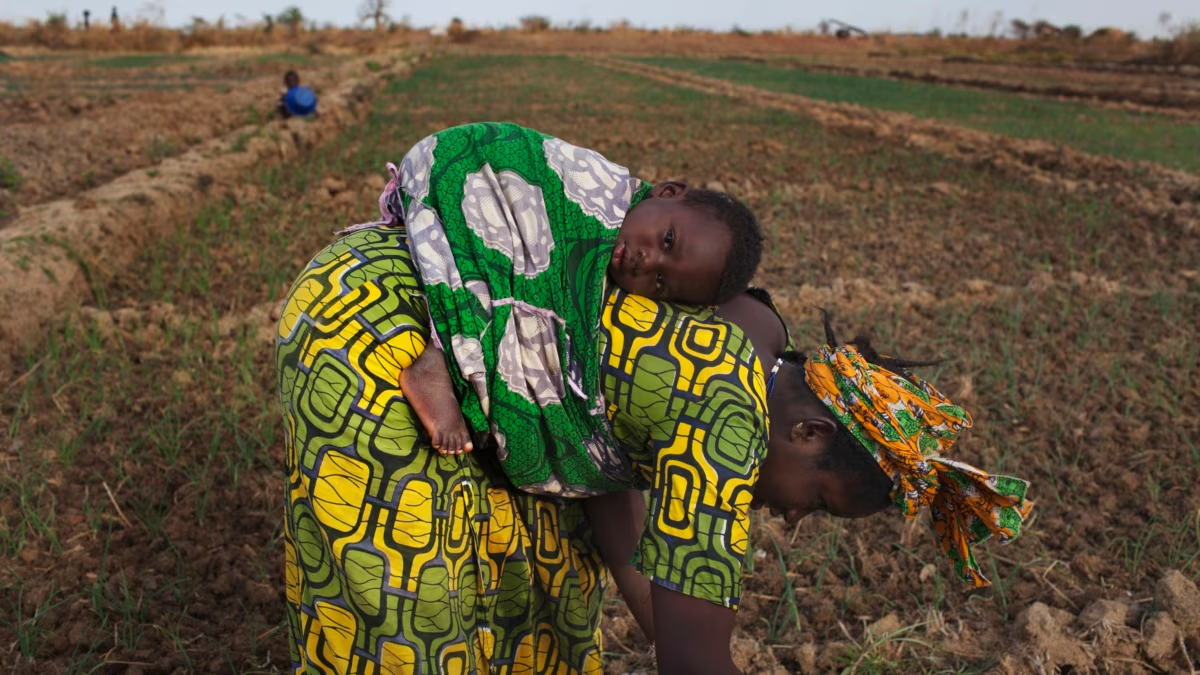How farmers are using road run-off to improve production in Kenya
Roads are known to form an interconnected network across our land to facilitate transportation. However, when roads are built they change the entire hydrology of the area: they either serve as an embankment or a drain. In either way, they have a major impact on the run-off in a landscape. The development of roads nowadays often typically has negative impacts, due to the rapid evacuation of water from roads. Roads cause floods and water logging along the way, whereas the concentrated run-off from culverts cause erosion and sedimentation.

Roads however, can be turned around into development reservoirs for increased resilience. Road infrastructure and its catchment has a large potential of water management. They can be used as instruments for water harvesting. There is a large range of options to collect water with roads: diverting water from culverts, channelling mitre-drains into farmland, deep trenches, developing small water bars to take water from the road surface, using road river crossings (so-called drifts) for water retention or reuse borrow/quarry pits as storage reservoirs.

How to manage our water resource?
With increasing water demands, as projected for the Kenya vision year of 2030, the water balance is to be stressed. The National Policy on Water Storage aims to ensure an increase in per capita storage from 5.3m3 to 16m3. Adequate water management and allocation of water resources therefore is of high importance, especially for the Arid and Semi-Arid lands of Kenya. We need to make maximum use of available water resources, and therefore road water harvesting provides great opportunity to collect, retain and store water. The run-off water from roads is an alternative water source for farmers to sustain and increase both crop- and livestock production.
How farmers are using road run-off to improve production

Take Farmers Mwania and Esther for example. They are located in Welovea and are having and have been practicing water harvesting for the last 38 years. They saw a lot of water being washed away from the road side during rainy season, so they took the initiative to harvest this water and use it in their farm. They are full time farmers who have put all their efforts into farming as the source of income in their household. The water is channelled from the roads through a cut-off and spread to the farm through trenches and terraces to irrigate their orange and mango trees. They store extra water in tanks and on farm ponds. The water is also used for their animals.

They have also contacted the road authorities in order to construct a culvert, so they can also harvest the water from the other side of the road. Mwania and Esther are willing to contribute up to 50% of the costs, recognizing how they can increase their produce with this water. The income they earn from the farm produce is much higher than the income from their previous employment. Water harvested from the road has greatly changed their lives. They find it so useful and highly profitable.
Another example is Farmer Muniu Ngwau who lives in Kisasi, Kitui. Proud mother of 10 children, and 3 grandchildren, a big family to take care of! She grows maize, beans, pigeon peas, cowpeas, green grams and mango trees on 5 acres of land. Partly for own consumption and a part is for commercial purposes. Pigeon peas are the main commercial crop. Because of the dry conditions at her farm, she does road water harvesting to boost crop production.
She harvests the water from the road side adjacent to the farm. Trenches are dug to store the water. This has increased the soil moisture and water is now accessible for the diverse crops. Therefore, yields have improved drastically. Before these interventions, a harvest would be 5 bags of maize, 1 bag of beans and 3 bags of pigeon peas. With road water harvesting this increased to 20 bags of maize, 5 bags of beans and 7 bags of pigeon peas. She can get sustainable harvests throughout the year, despite inadequate rainfall. Besides increased production, road water harvesting saves her time, money and effort to access water on the farm.
Low-cost with high benefits
These low-cost techniques implemented by farmers show how much benefit road water harvesting can have for each farmer. There is a wide range of techniques that can be implemented combined with other types of water harvesting. Often used are ponds, storage reservoirs, diversions/cut-offs, trenches, soaking pits and terraces. This way we can together achieve our dreams and make our farms, homes and our environment a better place.
We kindly invite you to share your innovations on your farm through this forum.
You can contact Luwieke Bosma ([email protected] / +254792656582) and Theophilus Kioko ([email protected] / +254721970030)














